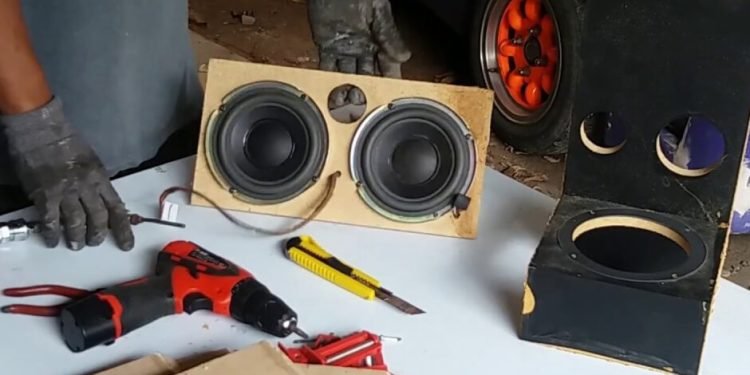A subwoofer box is a critical component of any audio system, responsible for delivering deep and impactful bass. To ensure optimal performance and longevity, proper maintenance and prompt troubleshooting, especially with vintage audio repairs, are essential. In this article, we will explore effective strategies for maintaining and troubleshooting subwoofer boxes. Whether you’re an audio enthusiast or a professional installer, these tips will help you preserve the performance of your subwoofer and address common issues that may arise.
Routine Maintenance Tips
A. Cleaning the Subwoofer Box
To maintain optimal performance, it is important to keep the subwoofer box free from dust and debris. Regular cleaning is necessary to prevent these particles from affecting the speaker’s performance. We will discuss recommended cleaning techniques and materials to ensure the box remains in top condition.
B. Checking and Tightening Connections
Loose or faulty connections can lead to distorted sound or intermittent performance. Regularly inspecting and tightening speaker wire connections, as well as securing amplifier and crossover connections, will help maintain a stable and reliable audio signal.
C. Inspection of Box Integrity
Over time, subwoofer boxes can develop weak spots or damage. Regularly inspecting the box’s integrity is crucial to prevent further issues. We will discuss how to identify signs of damage and provide guidance on repairing or reinforcing weak spots and loose components.
Troubleshooting Common Issues
A. Distortion or Muffled Sound
Distorted or muffled sound is a common issue that can arise with subwoofer boxes. We will explore potential causes, such as incorrect amplifier settings or faulty signal sources, and guide readers through troubleshooting steps to address these problems effectively.
B. Rattling or Vibrating Noises
Rattling or vibrating noises can detract from the listening experience. We will discuss common sources of these noises, including loose components or objects within the box, and provide practical solutions for securing loose parts and using padding or damping materials to eliminate unwanted vibrations.
C. Overheating
Subwoofers can generate significant heat during operation, and excessive heat can affect performance and potentially damage components. We will highlight signs of overheating and offer suggestions to address ventilation and cooling issues, including adjusting amplifier settings or employing external cooling methods.
D. Lack of Bass or Uneven Frequency Response
When a subwoofer fails to deliver the desired bass impact or exhibits uneven frequency response, it can be frustrating. We will examine potential causes, such as incorrect settings or poor box placement, and guide readers through steps to optimize subwoofer settings and address any acoustical challenges.
Repairing or Replacing Subwoofer Box Components
A. Damaged Speaker Cones or Surrounds
Speaker cones and surrounds can become damaged over time, impacting sound quality. We will discuss how to assess the extent of damage and provide guidance on repairing or replacing these components to restore optimal performance.
B. Damaged or Defective Amplifier
A faulty or defective amplifier can significantly impact the performance of a subwoofer system. We will help readers identify signs of amplifier issues and offer advice on seeking professional repair or considering replacement options when necessary.
C. Box Resonance or Air Leaks
Box resonance or air leaks can negatively impact sound quality and performance. We will explain how to detect these issues and provide practical solutions such as applying damping materials or using sealing techniques to address them effectively.
Proactive Measures for Long-Term Maintenance
A. Using Protective Covers
Protective covers offer an additional layer of defense against dust, moisture, and physical damage. They help preserve the appearance and functionality of the subwoofer box. Whether it’s a fabric cover or a more robust hard case, using a protective cover when the subwoofer is not in use can significantly extend its lifespan and reduce the risk of damage.
B. Regular Performance Testing
Regular performance testing is crucial for identifying any potential issues before they escalate. Conducting periodic sound checks and frequency response analysis allows you to monitor the subwoofer’s performance over time. By noting any changes or irregularities in the sound quality, you can take prompt action to address any emerging problems.
Conclusion
Maintaining and troubleshooting your subwoofer box is vital to ensure optimal sound quality and system longevity. By following the routine maintenance tips provided in this article, such as cleaning the box, checking and tightening connections, and inspecting box integrity, you can keep your subwoofer in peak condition.
In addition, knowing how to troubleshoot common issues like distortion, rattling noises, overheating, and frequency response problems empowers you to quickly address any problems that may arise. Whether it’s adjusting settings, securing loose components, or applying damping materials, these troubleshooting techniques will help restore the subwoofer’s performance.
For more serious issues involving damaged components or faulty amplifiers, seeking professional repair or considering replacement options may be necessary. Being proactive and conducting regular performance testing can help you catch any problems early on and prevent further damage.
Remember, a well-maintained and properly functioning subwoofer box enhances your overall audio experience, providing deep and impactful bass that immerses you in your favorite music or movies. By investing time and effort in maintenance and troubleshooting, you can enjoy superior sound quality and prolong the lifespan of your subwoofer box.
So, embrace the responsibility of subwoofer box maintenance and troubleshooting, and take pride in creating an audio environment that delivers impressive bass performance for years to come.












